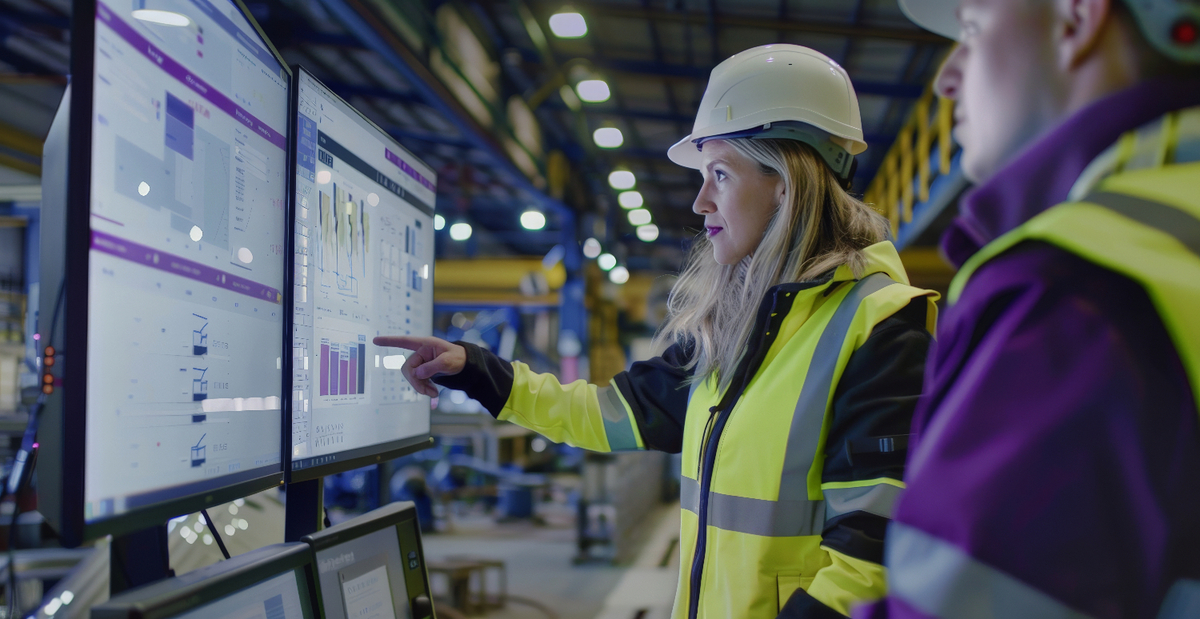The power of data-driven insights is causing a revolutionary change in the construction sector. Global construction projects in 2024 saved an estimated $1 billion by utilizing advanced analytics, artificial intelligence (AI), and building information modeling (BIM) to achieve previously unheard-of efficiency. Stakeholders are overcoming obstacles including resource inefficiencies, project delays, and cost overruns by utilizing real-time data and predictive analytics. Decision-makers in the construction industry are finding that data-driven insights are an invaluable resource for everything from design optimization to risk reduction.
This article examines how data has improved profitability, sustainability, and project management. We explore the ways in which this paradigm shift is influencing the future of construction through case studies, difficulties, and real-world applications. Professionals can adopt smarter, more sustainable procedures and ensure success in a field that is becoming more and more competitive by comprehending the influence of data.
Table of Contents
The Rise of Data-Driven Insights in Construction
The construction sector, which has historically relied on manual processes, has adopted data-driven insights in order to enhance project outcomes and solve inefficiencies. A 2023 McKinsey analysis estimates that the construction industry spends $10 trillion a year, with waste and inefficiency accounting for 35% of expenses. Businesses have found methods to decrease waste, improve decision-making, and expedite processes by incorporating data analytics into planning and implementation.
Modern construction now relies heavily on real-time data collecting via sensors and Internet of Things devices. By keeping an eye on machinery, supplies, and environmental factors, these technologies offer useful information that promotes sustainability and efficiency.
Advantages of Data-Driven Understanding in the Construction Industry

a. Increased Productivity
Construction managers can monitor key performance indicators (KPIs) like labor productivity, material utilization, and project milestones with the help of data analytics. By ensuring that resources are distributed effectively, this openness lowers waste and downtime.
b. Environmental Impact and Sustainability
Material selection, trash management, and energy use may all be optimized with data-driven insights. In today’s environmentally sensitive market, this not only lowers costs but also connects initiatives with sustainability goals.
c. Better Safety Regulations
Construction sites can detect high-risk locations and put preventative measures in place by evaluating data from wearable technology and sensors. Workplace accidents have drastically decreased as a result of this proactive strategy.
Suggested article to read: Safety First (2024): Enhancing AI and Sensors in Construction Safety
Case Study: Leveraging Predictive Analytics to Avoid Cost Overruns
A major European infrastructure project serves as one of the most noteworthy illustrations of data-driven success. By examining past data, weather trends, and supply chain interruptions, the project team used predictive analytics to foresee possible delays and cost overruns. By allowing for prompt scheduling and resource allocation changes, this proactive approach saved $100 million.
The project reduced downtime and avoided expensive rework by utilizing cutting-edge technologies like AI and BIM. This example shows how project management may be revolutionized by predictive analytics, leading to cost savings and increased efficiency.
Important Technologies for Data-Driven Understanding

a. Machine learning (ML) and artificial intelligence (AI)
Large datasets are analyzed using AI and ML to find trends, forecast results, and suggest courses of action. For instance, preemptive maintenance is made possible by ML algorithms’ ability to forecast equipment breakdowns.
b. Building Information Modeling (BIM)
BIM software integrates design, material, and schedule data to produce digital representations of construction projects. This decreases rework and improves teamwork.
c. Internet of Things (IoT)
Real-time data on worker activities, site conditions, and equipment performance is gathered by IoT devices, which offers insightful information for decision-making.
Challenges in Adopting Data-Driven Insights
Despite the obvious advantages, there are certain difficulties in implementing data-driven solutions in the construction industry:
- Skill Gaps: One of the primary obstacles to broad adoption is the dearth of qualified experts who can understand and use data analytics.
- Data Integration: It can be difficult and time-consuming to combine data from several sources, such as ERP systems, BIM platforms, and Internet of Things devices.
- Data security: Construction organizations are becoming increasingly concerned about safeguarding private data from online attacks.
These difficulties underscore the necessity of industry-wide cooperation and training and technology investments.
Future Trends in Data-Driven Construction
A number of trends are poised to redefine data-driven building as technology advances:
- Blockchain Technology: Ensures data security and transparency in construction contracts and supply chains.
- Sustainable Construction: By optimizing resource use and energy efficiency, data analytics will be essential to reaching net-zero emissions.
- Digital twins: Predictive maintenance and real-time monitoring are made possible by virtual representations of actual structures.

Conclusion
Project management, design, and sustainability have seen tremendous changes as a result of the construction industry’s adoption of data-driven insights. The observable benefits of adopting technology and data are demonstrated by the $1 billion in worldwide savings realized in 2024. In addition to reducing expenses, stakeholders are building robust, future-ready projects by utilizing real-time analytics, predictive modeling, and artificial intelligence.
The advantages of better decision-making, resource efficiency, and environmental impact reduction are indisputable, even while issues like data security and integration still exist. Data-driven insights will continue to enable the construction sector to fulfill intricate needs as technology advances, guaranteeing sustainability and long-term profitability. The secret to success for construction professionals is to remain ahead of these trends and use data to its fullest extent in order to transform their methods.
FAQs
What are data-driven insights in construction?
- Answer: Actionable knowledge obtained through the analysis of construction-related data is referred to as “data-driven insights,” which facilitate more intelligent decision-making and effective project management.
How do data-driven insights reduce costs in construction?
- Answer: Data-driven insights assist construction projects minimize cost overruns and enhance efficiency by detecting inefficiencies, forecasting delays, and optimizing resource usage.
What technologies support data-driven insights in construction?
- Answer: Predictive analytics tools, IoT devices, BIM platforms, and artificial intelligence are important technologies.
What are the challenges of implementing data-driven solutions in construction?
- Answer: Data integration problems, cybersecurity threats, and a lack of qualified experts to properly evaluate and use data insights are among the difficulties.
How can small construction firms adopt data-driven insights?
- Answer: Small businesses can begin by utilizing IoT sensors to track important data and incorporating reasonably priced technology like cloud-based project management software.
Suggested article for reading:
Predictive Analytics for Climate Resilience in 2024
Predictive Analytics in Construction Safety: 4 Examples from 2024
Predictive Analytics in Urban Design: 3 Success Stories from 2024
Predictive Analytics in Sustainable Architecture (2024)
10 Data-Driven Construction Trends Shaping the Future 2024
Resources:
Deloitte | McKinsey & Company | Construction Dive
- Jansen, S., & Lee, R. (2023). “Predictive Analytics in Large-Scale Construction Projects.” Journal of Building and Construction Management.
- Smith, J. (2023). Smart Construction: Leveraging Data for a Better Future.
For all the pictures: Freepik





